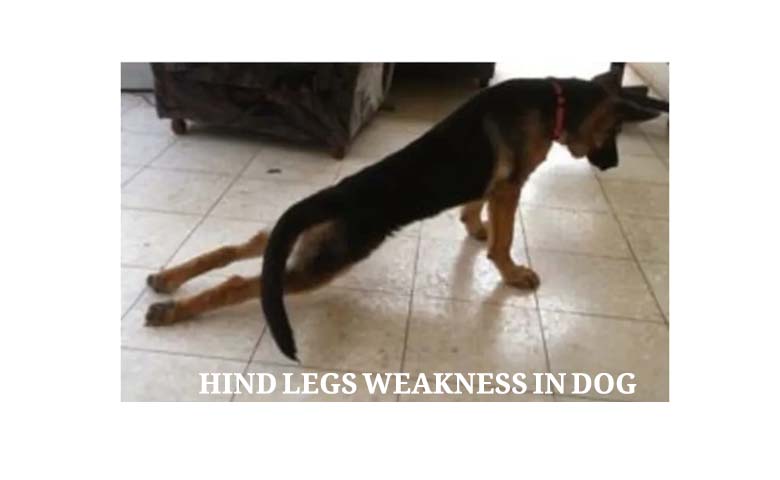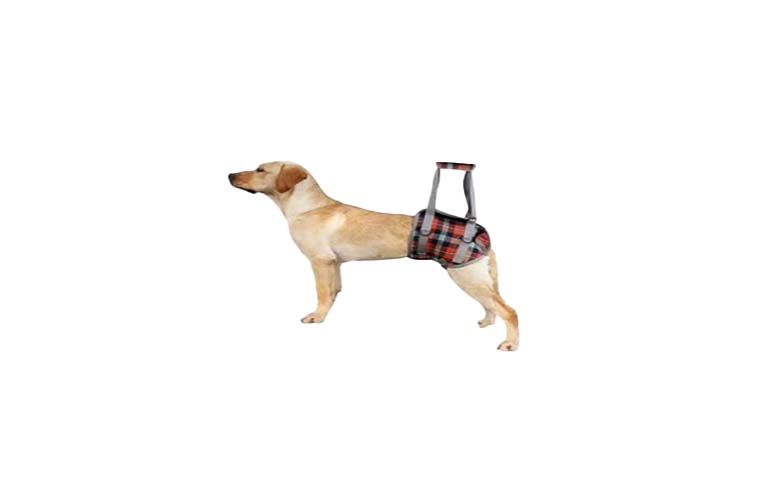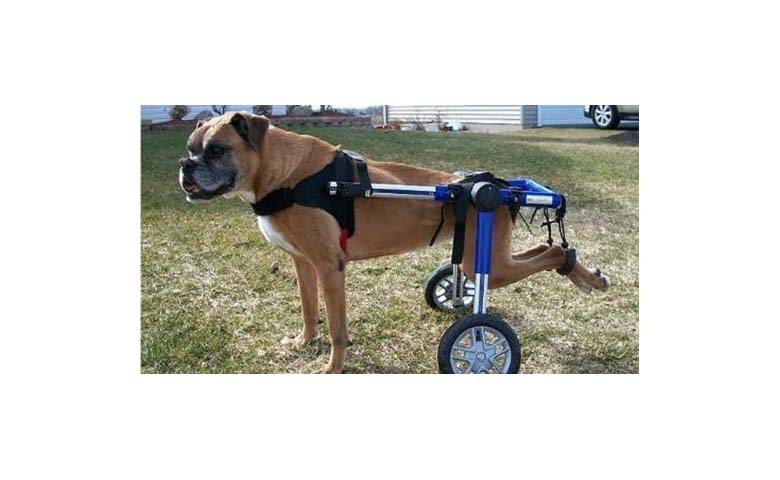Prof. (R) Dr. Ghulam Muhammad, Muzafar Ghafoor, Aliza Ali, Hafiza Dur E Najaf,
Department of Clinical Medicine and Surgery, University of Agriculture, Faisalabad
Hind leg weakness is a common and often intriguing disorder in old canines. Remember that on average, dogs live for about 10-13 years. In most of the affected dogs, it is a natural phenomenon associated with aging process. The following are some of the causes associated with this disorder (Ansari et al., 2015; How to Strengthen An Old Dog’s Hind Legs: 4 Exercises for Improved Mobility – Acme Canine; Dog Hind Legs Weakness| Guide to Managing Dog Back Leg Weakness (walkinpets.com):
- Canine osteoarthritis (manifested by difficulty in walking due to pain).
- Hip dysplasia (manifested by looser-than-usual hip joints). This genetic associated condition is more prevalent in larger breeds of dogs such as German Shepherd, Labrador Retriever, Saint Bernard, Great Dane etc.
- Canine degenerative myelopathy (a condition often associated with degeneration of protective covering of nerves (i.e. myelin) and manifested by quivering of hind legs, coming together of hind legs when dog is standing and progressive loss of mobility.
- Canine muscle atrophy characterized by progressive atrophy of muscles of hip and hind legs, ataxia, progressive weakness of limbs and dragging of feet when walking.
- Leg injuries e.g. rupture of cruciate ligament, broken bones and injuries to soft tissues often caused by road accidents, fall, jump from height, fractures, malicious blow by a stick, stone etc.
- Diabetes manifested by increased thirst and appetite with weight loss.
- Intervertebral disc disease usually manifested by sudden loss of mobility due to sudden rupture of intervertebral disc or herniation often impeding the spinal cord nerves.
- Fibrocartilaginous embolism (FCE) associated with a small piece of cartilage obstructing the blood supply and leading to spinal enlargement. The condition causes a temporary restriction of movement of hind legs and pain. FCE affects dogs of larger breeds e.g. German Shepherds and Irish Wolfhounds.
- Any condition that restricts the physical activity of dog (e.g. surgery).
The signs and severity of hind leg weakness vary in different cases depending upon the nature of the etiologic factor. The important signs include (Ansari et al., 2015; How to Strengthen An Old Dog’s Hind Legs: 4 Exercises for Improved Mobility – Acme Canine; Dog Hind Legs Weakness| Guide to Managing Dog Back Leg Weakness (walkinpets.com):
- Paresis (muscle weakness), decreased proprioception and dragging of hind legs during walking; (Ratnu and Parikh, 2022).
- Difficulty or a complete inability to walk.
- Difficulty in standing and climbing strains
- Swaying of hind end during walking
- Loss of muscle mass (=atrophy).

Diagnosis of hind leg weakness in dogs can be made on the basis of history of the case, clinical signs, neurological examination and findings of a diagnostic imaging technique e.g. x-rays (Ansari et al., 2015).
Treatment varies in different cases depending upon the nature of the disease condition that caused hind leg weakness.
Rx
- Apply a lifting harness for lifting the rear part of affected dog’s body.
- Apply a dog wheelchair to provide stability and to make easier for the affected dog to walk, run and play.
- Use hydrotherapy (e.g. swimming in water and underwater treadmills) to help the affected dog strengthen his/her back legs.
- Take the affected dog out for a walk on regular basis even if the walk is somewhat painful.
- Provide a healthy diet containing lean protein-rich foods and do every thing possible to prevent affected dog from gaining excesive body weight.
- To support joint health, provide food supplements containing Omega-3 fatty acids (e.g. Nutrifactor Omega-3 Fish oil).
- Resort to the application of physiotherapy techniques like pulse electromagnetic field therapy, therapentic ultra sound with analgesic ointment, electrical stimulation, massage, therapeutic exercise (stairs climbing, balancing, stand to sit-sit to stand) and inferential therapy (Ratnu and Parikh, 2022).
- Resort to the applicatiob of electro acupuncture and physiotherapy (Sharma, 2005).
- Provide high quality protein and avoid the feeding of fat (Hungerford,1990).
- Administer 25-200 mg of testosterone (e.g. Inj. Testoviron Depot® 250 mg, Bayer Pharma, Pakistan) IM every 2-4 weeks (Hungerford,1990).
- Administer a multivitamin-mineral preparation (e.g. Tab. Theragran-M, Bristol-Myers Squibb Pharmaceuticals) per os daily for about 2 months (Hungerford,1990).
- Administer an anabolic hormone (e.g. Inj. Deca-Duraboline 100 mg, OBS Pharma, Pakistan; contains nandrolone decanoate) every 1-3 months (Hungerford,1990).

Dog support harness for back legs in dog

Use of wheel chair for rehabilitation of dogs suffering from hind legs weakness
Modified from:
Ansari, M. M., M. M. S. Zama, T. Imtiyaz and S. Kumar, 2015. Studies on clinical variants and incidence of canine hind quarter weakness neurological disorder. Interl. J. Vet. Sci., 4(1):1-5.
Hungerford, T.G., 1990. Hungerford’s Diseases of Livestock. 9th Ed. McGraw-Hill Book Co. Sydney. pp. 902 -903.
Ratnu, D. A., and P. V. Parikh, 2022. Physiotherapy and rehabilitation management of musculoskeletal affections in canines. Ind. J. Vet. Sci. Biotechnol., 18(4):32-35. Sharma, A. K., 2005. Electro acupuncture and physiotherapy in the management of hind quarter weakness in dogs. Ph. D. thesis submitted to the deemed University, India. Veterinary Research Institute, Ozatnagar, U. P. India